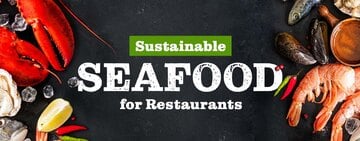Types of Alternative Diets
As the foodservice industry continues to evolve, it is becoming increasingly important for businesses to accommodate their customers' dietary needs and preferences. In recent years, there has been a significant rise in the number of individuals following alternative diets. These alternative diets are not just passing trends but rather lifestyle choices or medical necessities for many people. By understanding the specific requirements and the challenges these diets may pose for foodservice establishments, businesses can make informed decisions about how to accommodate them and provide their customers with a wide array of delicious and satisfying options.
Shop All Vegan & Plant-Based Foods1. Veganism
What is Veganism?
In simple terms, being a vegan means abstaining from the consumption of any animal products, including meat, eggs, dairy, and even honey. Their diet consists of mostly fruits, vegetables, grains, and beans. Veganism is not just a dietary choice, but a lifestyle that extends beyond the plate. Vegans also avoid using or wearing any products derived from animals, such as leather, fur, and silk.
How to Create a Vegan Restaurant Menu
Creating a vegan restaurant menu can be a great way to cater to the growing demand for plant-based food options. Vegan menu items also have a wide range, stemming from non-dairy products to plant-based meat substitutes. Whether you're starting a new vegan restaurant or looking to expand your current menu, here are some key considerations to keep in mind:
- Offer a Variety of Plant-Based Proteins- Include a variety of plant-based protein options on your menu. This can include legumes like chickpeas, lentils, and black beans, as well as tofu, seitan, and tempeh.
- Highlight Seasonal and Local Produce- Emphasize the use of seasonal and locally sourced produce in your vegan dishes. Not only does this support local farmers and reduce your carbon footprint, but it also ensures that your menu offerings are fresh, flavorful, and aligned with sustainability values.
- Incorporate Creative and Flavorful Dishes- Get creative with your menu by offering a range of flavorful and innovative dishes. Experiment with different spices, herbs, and condiments to enhance the taste and texture of your vegan offerings.
- Provide Clear Allergen Information- Many people with dietary restrictions or allergies choose vegan options because they are often free from common allergens like dairy, eggs, and gluten. Make sure to clearly label any potential allergens in your dishes to accommodate customers with specific dietary needs.
2. Vegetarianism
What is Vegetarianism?
Vegetarianism is a dietary choice that abstains from the consumption of meat, including poultry, seafood, and any other animal flesh. However, there are different variations within the vegetarian spectrum, each with its own set of guidelines. Vegetarianism is often chosen for a variety of reasons, including health, ethical, and environmental concerns. Additionally, some individuals choose vegetarianism to reduce their carbon footprint and support more sustainable food practices.
How to Create a Vegetarian Restaurant Menu
From a commercial perspective, accommodating vegetarian diets has progressively grown in importance. Restaurants, catering services, and food manufacturers have recognized the growing demand for vegetarian options and have started incorporating plant-based dishes into their menus. This allows them to cater to a wider audience and showcase their commitment to providing inclusive food choices. We’ve outlined critical factors to consider when designing a vegetarian restaurant menu below:
- Use Plant-Based Proteins- Make sure your vegetarian menu includes a range of plant-based protein options such as tofu, tempeh, seitan, legumes, and quinoa. These ingredients are great sources of protein and can be used in a variety of dishes like stir-fries, curries, salads, and sandwiches.
- Get Creative with Vegetables- Experiment with different cooking techniques and flavors to create exciting and satisfying vegetable-based dishes. Roasting, grilling, and sauteing vegetables can bring out their natural flavors and textures.
- Alter Popular Dishes- Create vegetarian versions of popular non-vegetarian dishes, such as veggie burgers, vegetarian lasagna, or vegetarian sushi rolls. This way, you can cater to both vegetarians and non-vegetarians who are looking for meatless options.
3. Gluten-Free
What Is Gluten-Free?
Gluten is a protein found in wheat, barley, and rye and is what gives dough its elasticity and helps it rise. Many people have discovered that they feel better and experience fewer digestive issues when they avoid gluten. This has led to a growing market for gluten-free products such as gluten-free bread options for sandwiches and gluten-free crusts for pizza.
It's crucial to note that cross-contamination is a concern when making gluten-free items. Even a small amount of gluten can trigger symptoms in those with a gluten intolerance. To prevent cross-contamination, you should have separate preparation areas and utensils for gluten-free items. Additionally, be sure to educate your staff on the importance of avoiding cross-contamination and proper handling of gluten-free products.
How to Create a Gluten-Free Restaurant Menu
With the increasing number of people following gluten-free diets, it's important for restaurants to accommodate their needs and offer gluten-free options on their menus. Whether you're a high-end fine dining establishment or a casual neighborhood eatery, here are some tips on how to make a gluten-free restaurant menu that will appeal to a wide range of customers:
- Train Your Staff- To ensure that your gluten-free menu is executed properly, it's vital to train your staff on the basics of gluten-free cooking and cross-contamination prevention. By educating your staff, you can minimize the risk of cross-contamination and provide a safe dining experience for your gluten-free customers.
- Collaborate with Gluten-Free Suppliers- These suppliers specialize in providing gluten-free ingredients and products, ensuring that you have access to high-quality gluten-free options. Collaborating with gluten-free suppliers can also help you stay up-to-date with the latest gluten-free trends and innovations, allowing you to continually expand and improve your gluten-free menu offerings.
- Label Clearly and Accurately- Use a specific symbol or icon to make it easy for customers to identify gluten-free options at a glance. This will help customers with gluten allergies or sensitivities feel confident in their choices and avoid any potential health risks.
What Is a Dietary Legend?
A dietary legend is a visual representation or symbol system that provides customers with a quick and easy way to identify dishes that meet their dietary restrictions or preferences. By using easily recognizable icons or symbols, businesses can streamline the process of finding suitable options on their menus. With a dietary legend in place, customers can quickly scan a menu and identify the dishes that align with their dietary preferences. This not only saves time for the customer but also streamlines the ordering process, allowing staff to efficiently serve a wider range of dietary needs.
How to Make a Dietary Legend
As a commercial establishment, it's crucial to be able to cater to customers with alternative diets. Whether it's due to health reasons, personal preferences, or religious beliefs, accommodating these dietary needs not only ensures customer satisfaction but also opens up your business to a wider range of clientele. By creating a dietary legend, you are making it easier for customers to navigate your menu, and are also showing your commitment to inclusivity and customer satisfaction.
- Use Clear Symbols or Icons- Create a set of symbols or icons that represent each alternative diet option. This visual cue will help customers quickly identify the options that suit their dietary requirements.
- Provide Detailed Descriptions- Alongside the symbols, it's important to provide brief descriptions of each dietary option, giving customers a better understanding of what ingredients are used. Providing this information will help customers make informed decisions and avoid any confusion.
- Train Your Staff- Your dietary legend is only effective if your staff is knowledgeable about the different dietary options and can provide accurate information to customers. Conduct regular training sessions to educate your staff about each dietary need, the symbols used, and the ingredients that go into each dish.
- Update and Adapt- As dietary trends and customer preferences evolve, it's crucial to regularly review and update your dietary legend. Stay informed about emerging diets and be open to customer feedback, allowing you to continuously improve your offerings and cater to a wider range of alternative diets.
Understanding the various alternative diets and the specific requirements they entail is key to effectively accommodating them. Accommodating alternative diets is not only a matter of providing options for a small niche of customers; it is about inclusivity and meeting the diverse needs of a wide range of individuals. By offering menu items that cater to alternative diets, businesses can attract and retain a larger customer base, ensuring that everyone feels welcome and satisfied with their dining experience.



